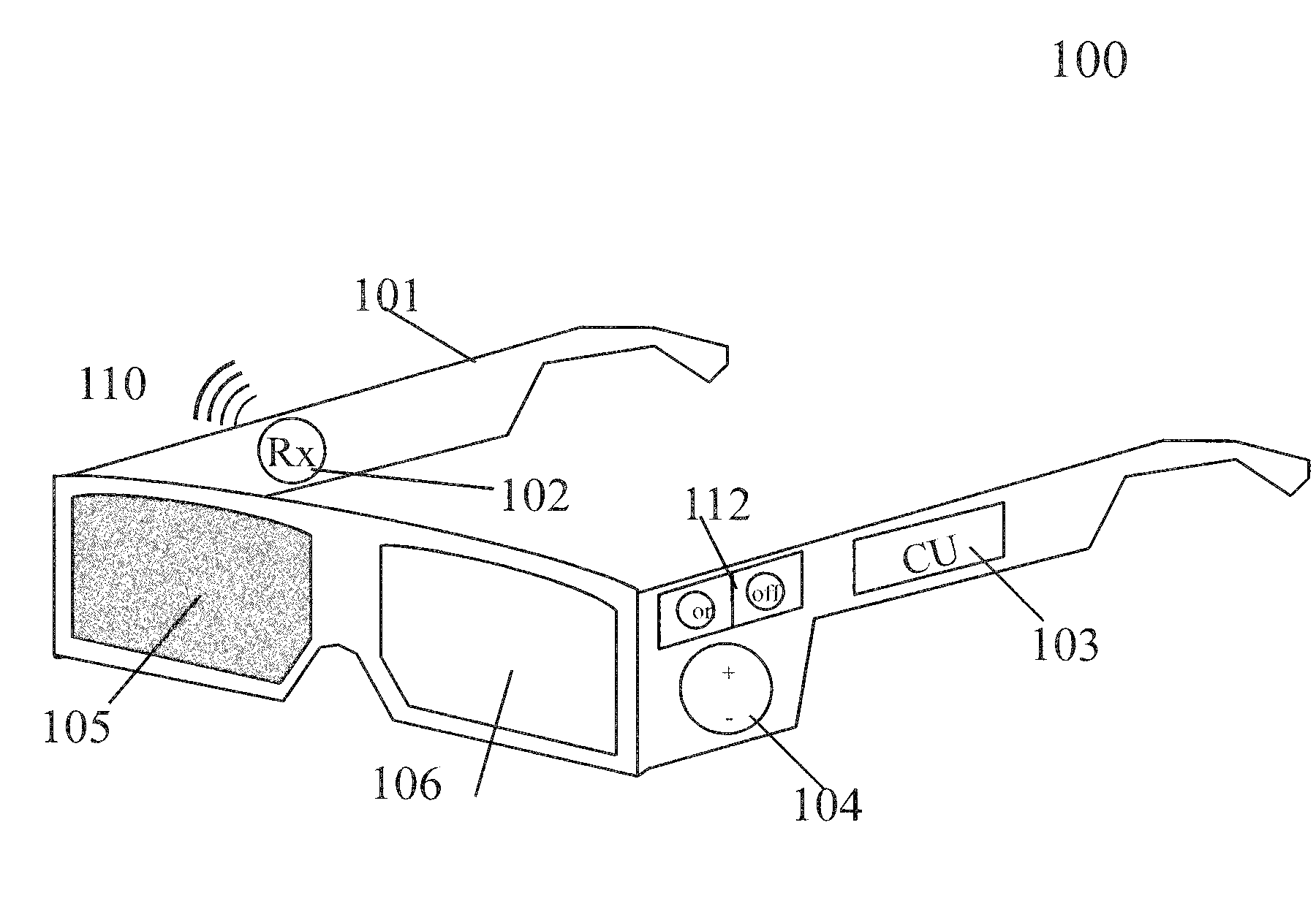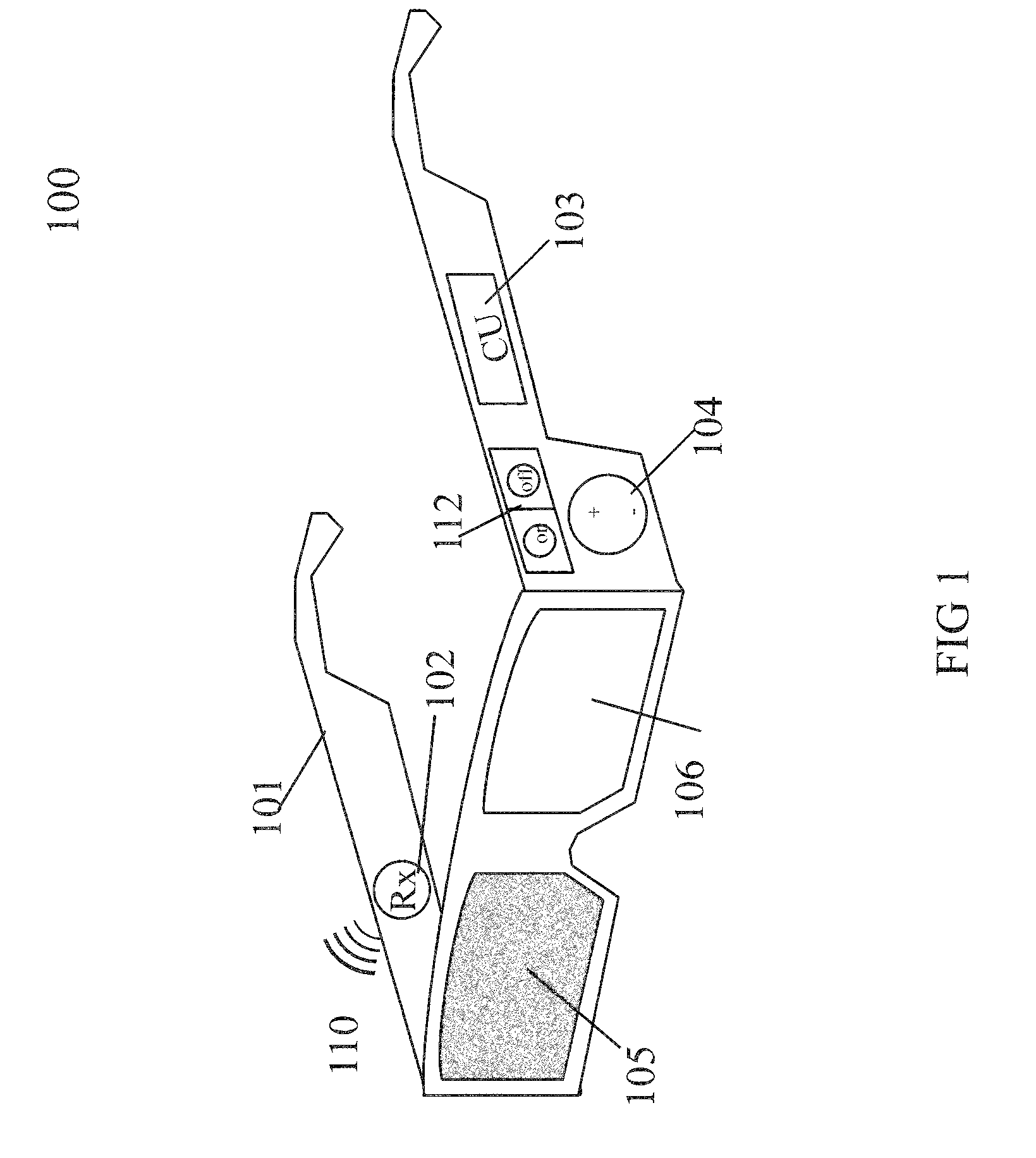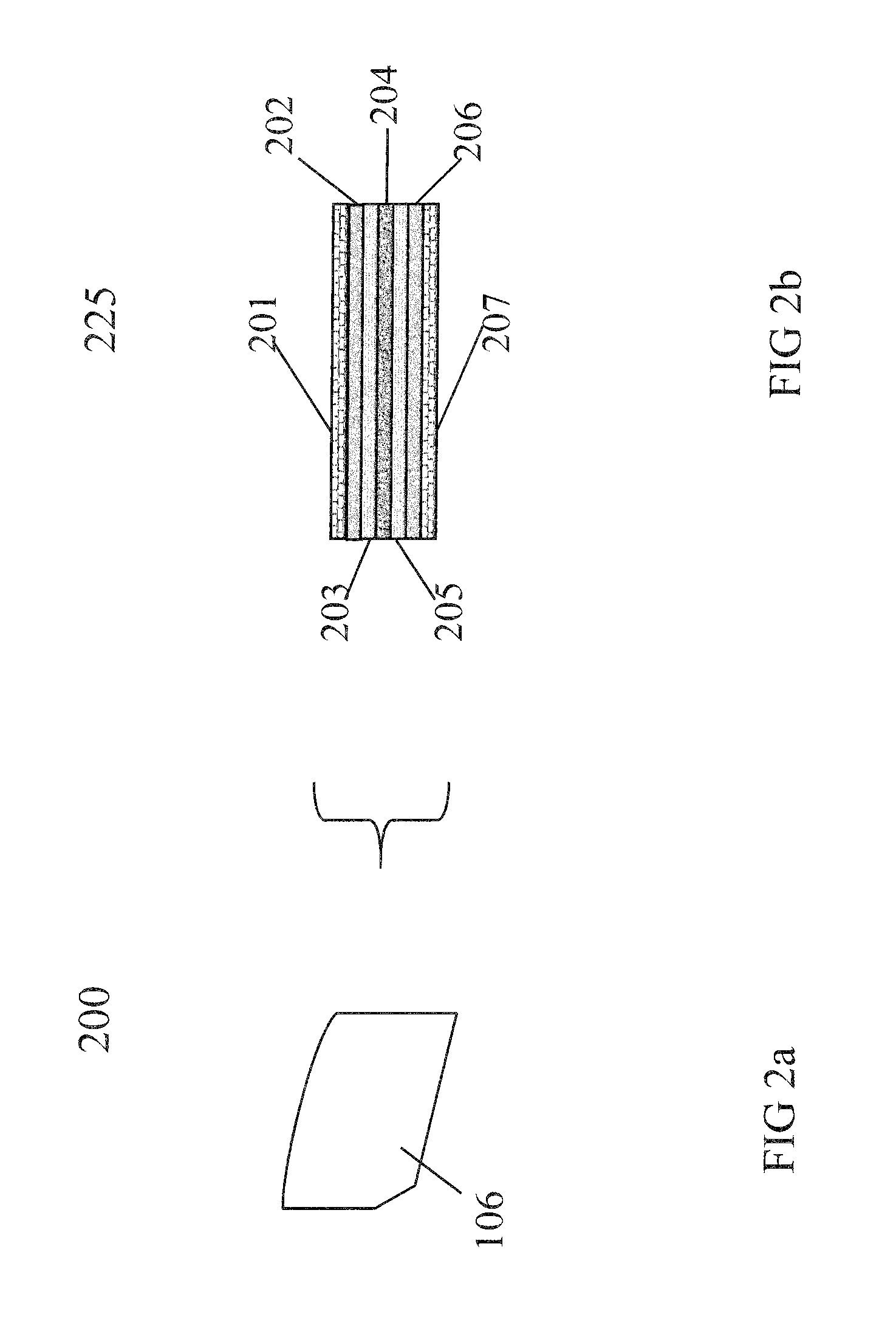Continuous adjustable 3Deeps filter spectacles for optimized 3Deeps stereoscopic viewing and its control method and means
a filter spectacle and continuous adjustable technology, applied in the field of motion pictures, can solve the problems of inability to transition between far apart optical density states, ‘cycle life, optoelectronic materials,
- Summary
- Abstract
- Description
- Claims
- Application Information
AI Technical Summary
Benefits of technology
Problems solved by technology
Method used
Image
Examples
Embodiment Construction
[0032]Significantly faster state transitioning time between the optimal optical density for viewing 2D Movies as 3D movies through Continuous Adjustable 3Deeps Filter Spectacles can be achieved by using multiple layers (multi-layer) of electronically controlled variable tint materials to fabricate the right and left lenses of the 3Deeps spectacles. The use of multi-layered lenses may result in as much as a 50% decrease in transition time between states.
[0033]Spectacles for viewing 2D movies in 3D have been described previously in earlier related patent applications. The first version was called 3Deeps Filter Spectacles and the later improved spectacles were called Continuous Adjustable 3Deeps Filter Spectacles. Continuous Adjustable 3Deeps Filter Spectacles optimally adjust the optical density of electronically controllable variable tint left and right lenses in synchronization with a 2D movie so as to maximize the Pulfrich stereoscopic optical illusion. Numerous electronically cont...
PUM
 Login to View More
Login to View More Abstract
Description
Claims
Application Information
 Login to View More
Login to View More - R&D
- Intellectual Property
- Life Sciences
- Materials
- Tech Scout
- Unparalleled Data Quality
- Higher Quality Content
- 60% Fewer Hallucinations
Browse by: Latest US Patents, China's latest patents, Technical Efficacy Thesaurus, Application Domain, Technology Topic, Popular Technical Reports.
© 2025 PatSnap. All rights reserved.Legal|Privacy policy|Modern Slavery Act Transparency Statement|Sitemap|About US| Contact US: help@patsnap.com



